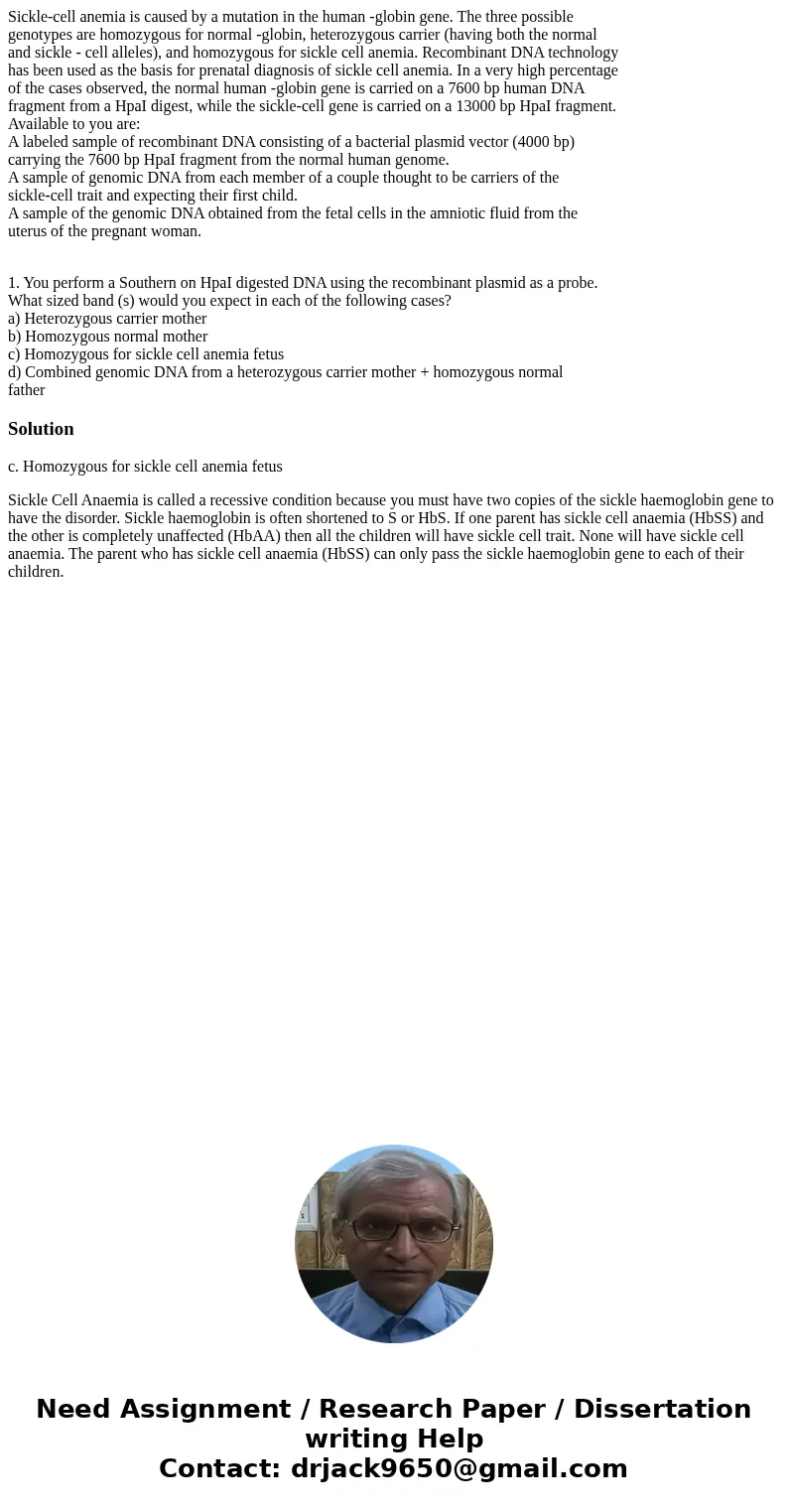Sicklecell anemia is caused by a mutation in the human globi
Sickle-cell anemia is caused by a mutation in the human -globin gene. The three possible
genotypes are homozygous for normal -globin, heterozygous carrier (having both the normal
and sickle - cell alleles), and homozygous for sickle cell anemia. Recombinant DNA technology
has been used as the basis for prenatal diagnosis of sickle cell anemia. In a very high percentage
of the cases observed, the normal human -globin gene is carried on a 7600 bp human DNA
fragment from a HpaI digest, while the sickle-cell gene is carried on a 13000 bp HpaI fragment.
Available to you are:
A labeled sample of recombinant DNA consisting of a bacterial plasmid vector (4000 bp)
carrying the 7600 bp HpaI fragment from the normal human genome.
A sample of genomic DNA from each member of a couple thought to be carriers of the
sickle-cell trait and expecting their first child.
A sample of the genomic DNA obtained from the fetal cells in the amniotic fluid from the
uterus of the pregnant woman.
1. You perform a Southern on HpaI digested DNA using the recombinant plasmid as a probe.
What sized band (s) would you expect in each of the following cases?
a) Heterozygous carrier mother
b) Homozygous normal mother
c) Homozygous for sickle cell anemia fetus
d) Combined genomic DNA from a heterozygous carrier mother + homozygous normal
father
Solution
c. Homozygous for sickle cell anemia fetus
Sickle Cell Anaemia is called a recessive condition because you must have two copies of the sickle haemoglobin gene to have the disorder. Sickle haemoglobin is often shortened to S or HbS. If one parent has sickle cell anaemia (HbSS) and the other is completely unaffected (HbAA) then all the children will have sickle cell trait. None will have sickle cell anaemia. The parent who has sickle cell anaemia (HbSS) can only pass the sickle haemoglobin gene to each of their children.

 Homework Sourse
Homework Sourse